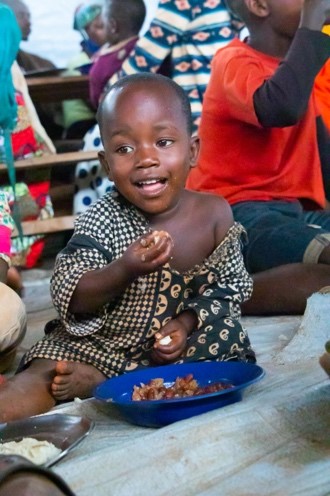Intercommunal clashes force 11,000 Cameroon people to flee to Chad
According to the Chadian authorities, the violence forced 11,000 people from both groups to cross the border, located near their home villages, to seek refuge in Chad.

The most violent intercommunal clashes between Choa Arab herders and Mousgoum fishermen and farmers ever recorded to date began on 10 August in Missiska, in the Logone Birni district of Cameroon's Far North region. At least 32 people were killed and 74 injured.
According to the Chadian authorities, the violence forced 11,000 people from both groups to cross the border, located near their home villages, to seek refuge in Chad. About 85 per cent of them are women and children, and most of the men are elderly.
In addition, 7,300 people were displaced within Cameroon's borders in the Logone et Chari department of the Far North region.
"UNHCR, the UN Refugee Agency, calls on the governments concerned to do everything possible to reduce the intercommunal tensions that have caused this displacement and to ensure the safety of people forced to flee," said Millicent Mutuli, the Director of the Regional Bureau for West and Central Africa.
19 villages burned down
Some forcibly displaced Cameroonians have told UNHCR teams in Chad that they have been victims of targeted attacks. They say their houses were burnt and their property destroyed. A total of 19 villages were burned down. In Cameroon, the Far North local authorities are working on restoring calm and provide assistance to the victims. In Chad, the new arrivals are in urgent need of shelter, especially during the rainy season. Many are sleeping under trees. Some have found shelter in schools or with host families. UNHCR and its local and international partners have been working closely with the Chadian authorities to assist them.
“There is an urgent need for temporary shelter because most of the new arrivals are women and children exposed to a wide range of protection risks,” said Iris Blom, UNHCR Deputy Representative in Chad. “Our teams are building hangars to provide them with a safe place to sleep and to organize community activities for children.”
Basic necessities items and hot meals have been distributed but the need for food and water supplies remains pressing. Preliminary registration of asylum seekers has started. Access to the host villages, which are in remote areas out of phone coverage, is made even more difficult by the rains which deteriorate the road conditions.
The clashes between Choa Arab herder and Mousgoum fishermen and farmers were caused by tensions over agricultural, fisheries and pastoral resources. The most serious event of this type recorded previously dates back to 2019 when one person died.
The departure localities are separated from the arrival villages of Houndouma and Ngamal in Chad by the Logone River, which is about 350 meters wide in this area.
As of 1st August, the UNHCR operations in Chad and Cameroon remain severely underfunded with respectively only 43% and 44% of their financial requirements for 2021 covered. Chad already hosts 510,000 refugees and Cameroon 450,000. Additional funding is urgently needed to respond to the needs of the forcibly displaced in both countries.
(With Inputs from APO)
- READ MORE ON:
- Cameroon
- Millicent Mutuli
- Chad
- UNHCR










